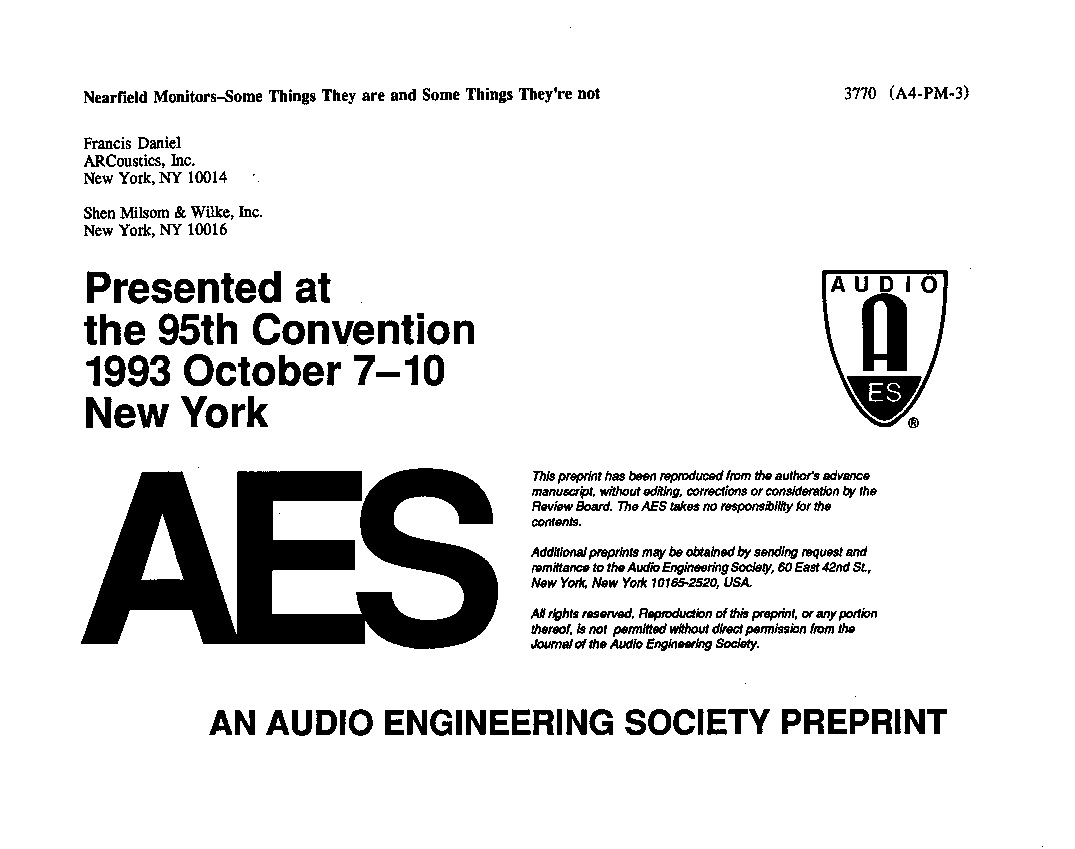Home / Publications / E-library page
You are currently logged in as an
Institutional Subscriber.
If you would like to logout,
please click on the button below.
Home / Publications / E-library page
Only AES members and Institutional Journal Subscribers can download
The ubiquitous so-called nearfield monitor is popularly misunderstood because it is used to insulate the mixer from room acoustic effects. In fact, it interacts with its environment in a number of ways which should be understood by the user. With understanding, some of these interactions can be ameliorated and the remainder rendered less surprising. The major interactions are: 1) Spectral shifts with small shifts in position because the listener is in fact in a partial nearfield; 2) Spectral misestimation due to a direct/reflected ratio that is significantly different from large front-wall studio monitors, the home, or automotive listening environment; 3) Imaging and spectral errors due to console reflections and vibrations; and 4) Low-frequency modal room effects, causing large narrow band shifts in low-frequency response with variations in room position. The paper includes measurements of many of these effects and discusses the experiences of the author in designing studios and home playback surround-sound systems. Several remedies are suggested.
Author (s): Daniel, Francis
Affiliation:
ARCoustics, Inc., New York, NY ; Shen Milsom & Wilke, Inc., New York, NY
(See document for exact affiliation information.)
AES Convention: 95
Paper Number:3770
Publication Date:
1993-10-06
Import into BibTeX
Session subject:
Topics in Acoustics and Auralization
Permalink: https://aes2.org/publications/elibrary-page/?id=6463
(917KB)
Click to purchase paper as a non-member or login as an AES member. If your company or school subscribes to the E-Library then switch to the institutional version. If you are not an AES member Join the AES. If you need to check your member status, login to the Member Portal.

Daniel, Francis; 1993; Nearfield Monitors--Some Things They Are and Some Things They Are Not [PDF]; ARCoustics, Inc., New York, NY ; Shen Milsom & Wilke, Inc., New York, NY; Paper 3770; Available from: https://aes2.org/publications/elibrary-page/?id=6463
Daniel, Francis; Nearfield Monitors--Some Things They Are and Some Things They Are Not [PDF]; ARCoustics, Inc., New York, NY ; Shen Milsom & Wilke, Inc., New York, NY; Paper 3770; 1993 Available: https://aes2.org/publications/elibrary-page/?id=6463